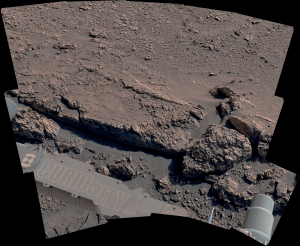Cassini Significant Event Report
For Week Ending 05/18/01
The most recent spacecraft telemetry was acquired from the Madrid tracking
station on Wednesday May 16. The Cassini spacecraft is healthy and is
operating normally. Information on the
spacecraft's position and speed can be viewed on the
"Present Position"
web page.
The Cassini Command and Data System (CDS) initiated a safing response on
May 10. The event occurred while the spacecraft was being tracked by DSS
25 as part of the nominal downlink strategy for cruise sequence C26.
Safing was initiated by the prime CDS computer after it detected that the
backup CDS computer had started a series of resets.¿
A memory readout of the Fault Protection logs verified the initial
diagnosis that safing was triggered by a missing telemetry mode table on
the backup CDS. The spacecraft responded flawlessly, halting all sequence
activities, reorientation of the spacecraft to sun-point, selection of the
Low Gain Antenna for communication, reduction of the downlink data rate to
20 bps and powering off of all science instruments. All responses were
nominal. Procedures for resuming normal operations are well underway, and
will conclude later this week with powering on the science instruments and
resuming the background sequence.
The planned 0.5-mr deadband Reaction Control Subsystem (RCS) test was
successfully executed on the spacecraft. This test was designed to confirm
the Attitude Control System performance for the stringent pointing
requirements of the Huygens Probe relay sequence. Due to the safing event,
this activity was accomplished via real-time commands. Early telemetry
analysis indicates that performance requirements were met.
The C27 Sequence Kickoff Meeting was held, with the Sequence Virtual Team
commencing the sub-sequence generation phase which will last just over one
week. During this phase the instrument and engineering teams populate the
sequence with commands in order to build the C27 background sequence.
System Engineering (SE) organized a teleconference with Cassini
Information Management System (CIMS) Southwest Research Institute (SWRI)
developers and EIS/Oracle Technical Support to discuss database access
issues.¿
In support of the upcoming Imaging Science Subsystem (ISS) Flight Software
(FSW) update, SE organized a meeting with the Spacecraft Office (SCO) and
Instrument Operations (IO) teams to discuss flight software development
processes and procedures.
The Cassini Operations System (COS) Verification & Validation (V&V) plan
was reviewed and updated by personnel from the SE, IO, SCO, Mission
Support & Services Office (MSSO) and Uplink Operations (ULO) teams. The
V&V plan outlines the schedule and methods used to check that the correct
systems are incorporated into the COS and that they function properly
together in preparation for the Gravitational Wave Experiment (GWE),
Saturn Orbit Insertion (SOI), and Tour.
The Mission Planning team submitted the revised version of the Mission
Plan Guidelines & Constraints and updated Probe Relay and SOI timelines to
the Cassini change request system.
The Atmosphere Working Group, Surface Working Group, Apoapse Splinter
Group and Satellite Orbiter Science Team all held meetings to further
define and analyze their respective disciplines of the Tour.
Additional information about Cassini-Huygens is online at http://saturn.jpl.nasa.gov.
Cassini will begin orbiting Saturn on July 1, 2004, and release its piggybacked Huygens probe about six months later for descent through the thick atmosphere of the moon Titan. Cassini-Huygens is a cooperative mission of NASA, the European Space Agency and the Italian Space Agency. JPL, a division of the California Institute of Technology in Pasadena, manages the mission for NASA's Office of Space Science, Washington, D.C.
Media Relations Office
Jet Propulsion Laboratory
California Institute of
Technology
National Aeronautics and Space
Administration
Pasadena, Calif. 91109.
Telephone (818) 354-5011






























